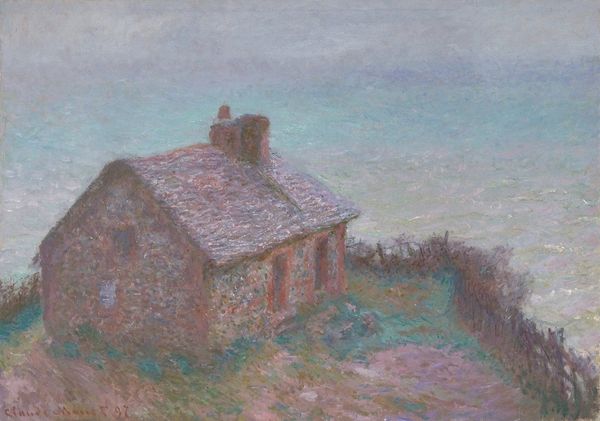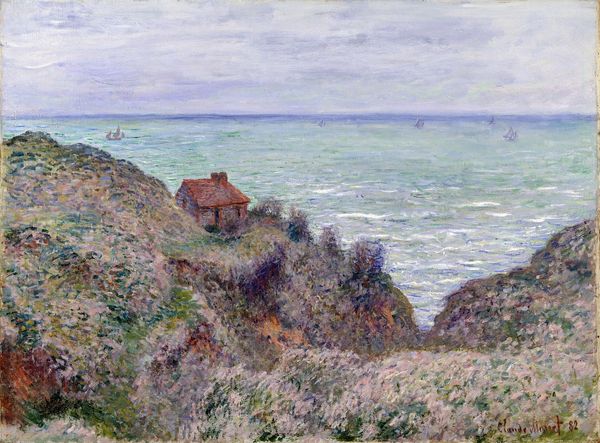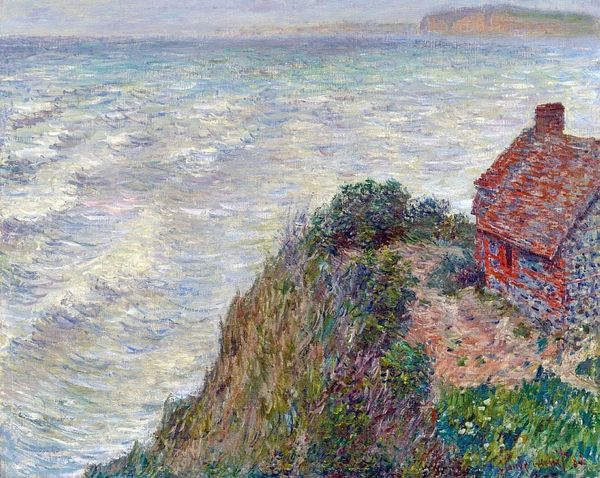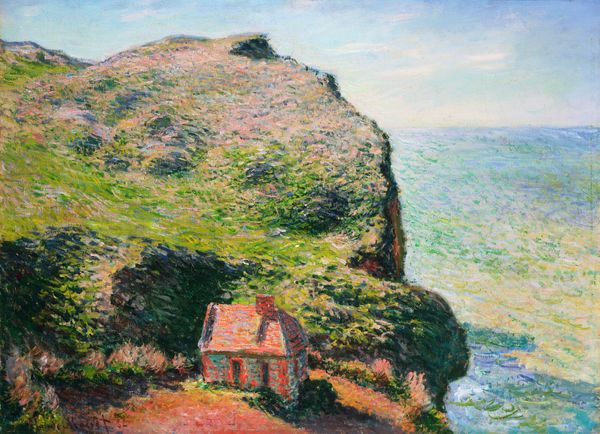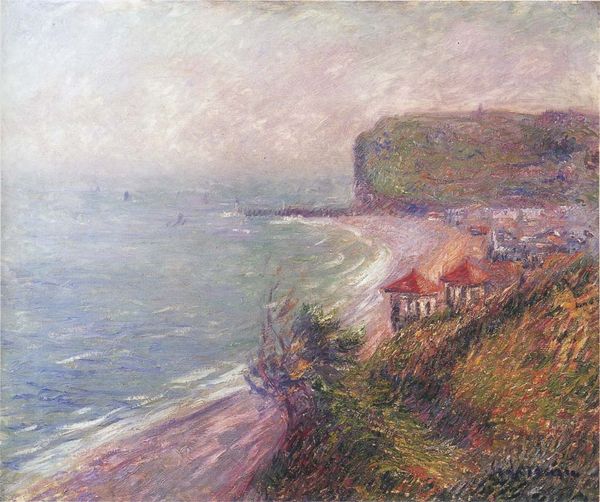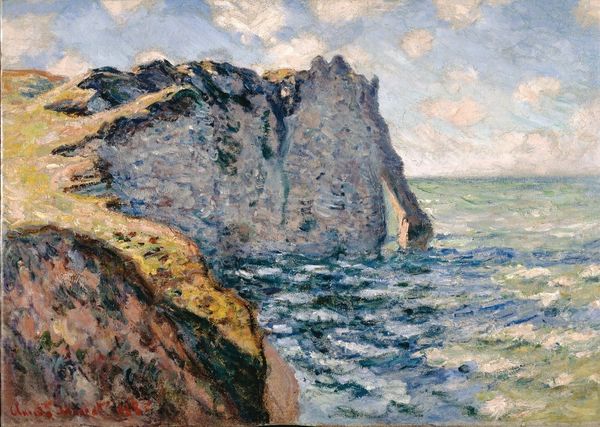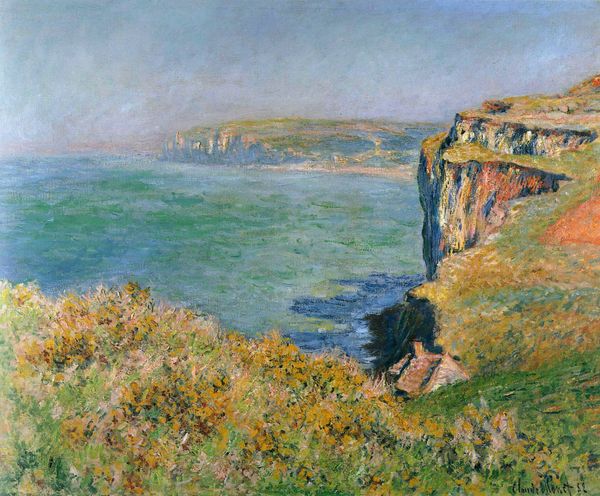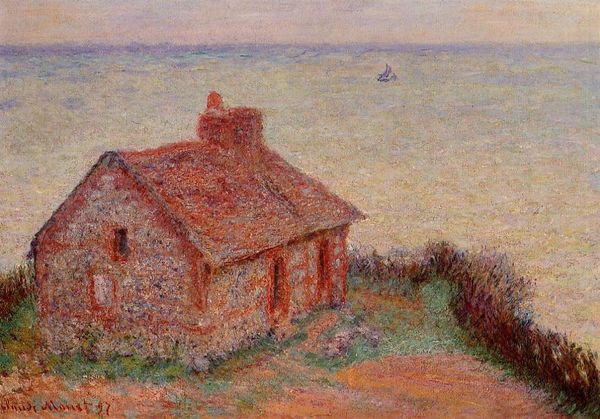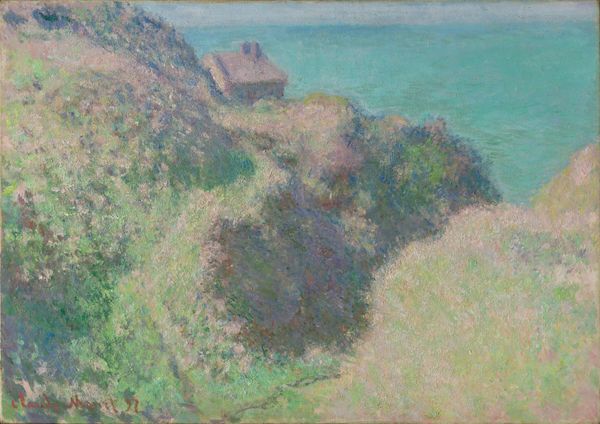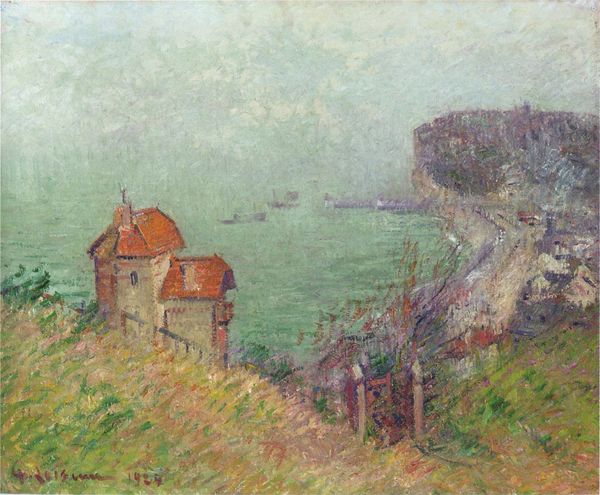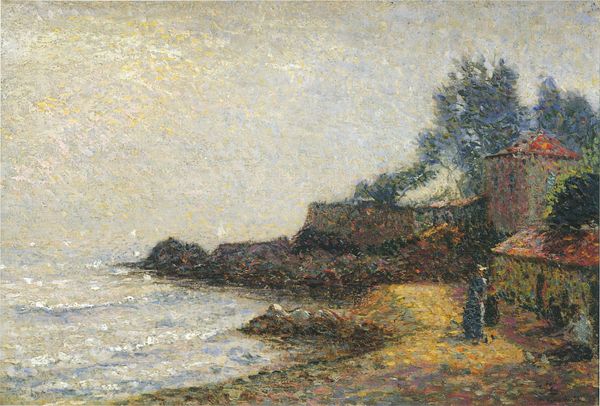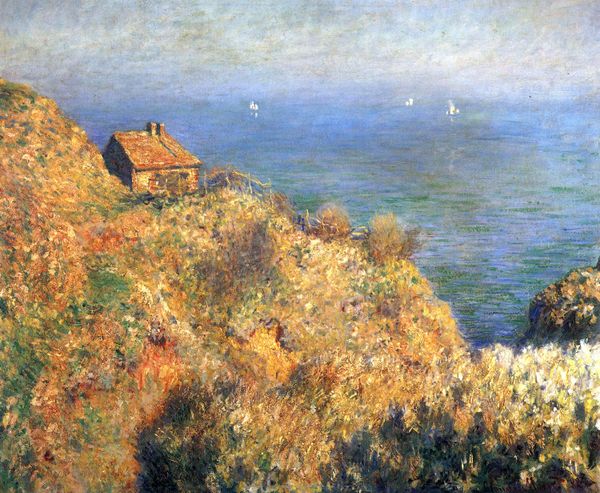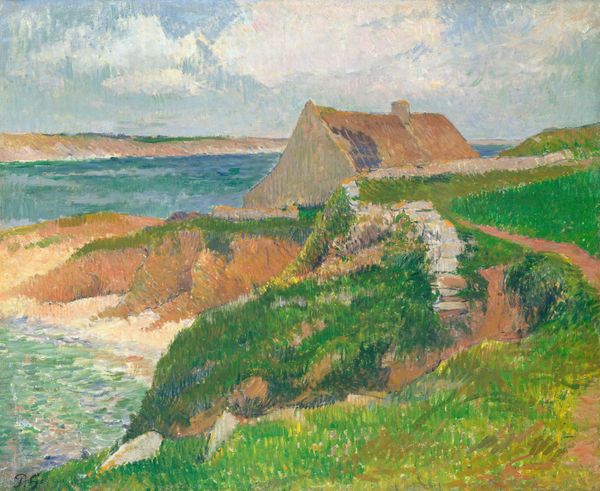
Dimensions: 61 x 74.9 cm (24 x 29 1/2 in.) framed: 82.6 Ã 95.6 Ã 8.9 cm (32 1/2 Ã 37 5/8 Ã 3 1/2 in.)
Copyright: CC0 1.0
Editor: Here we have Claude Monet’s, House of the Customs Officer, Varengeville. It’s an oil on canvas, currently at the Harvard Art Museums. The scene feels so isolated. What social narratives do you see embedded within this depiction? Curator: I’m drawn to that isolation too. Consider the socio-political climate of late 19th century France. The customs house, once a symbol of state power and control, is now rendered as a solitary, almost vulnerable structure. How does this reflect shifting power dynamics? Editor: That's interesting. The vulnerability wasn't something I had considered at first. Curator: And think about the role of the artist. Monet, painting en plein air, capturing the fleeting effects of light on this structure. Is he merely depicting a scene, or is he also commenting on the transience of power, the erosion of established norms? Editor: So, the painting isn’t just about the aesthetic, but about the subtle commentary on society at the time. I will remember that.
Comments
No comments
Be the first to comment and join the conversation on the ultimate creative platform.
